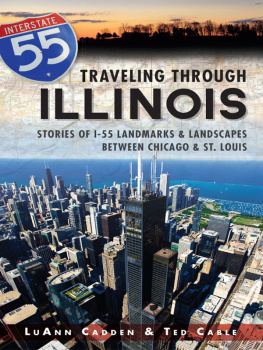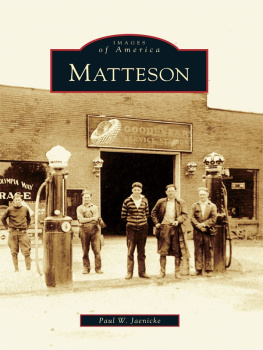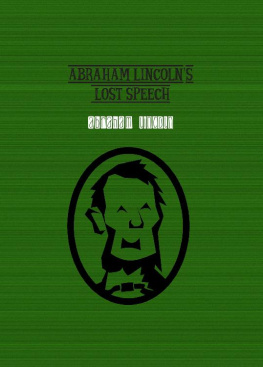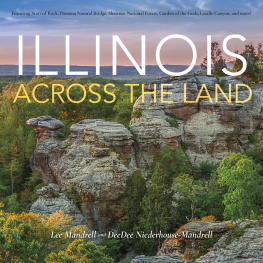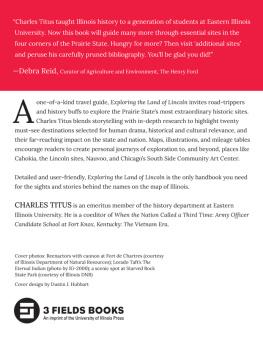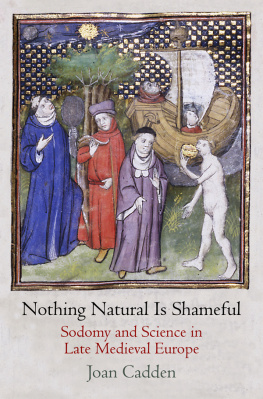
Published by The History Press
Charleston, SC 29403
www.historypress.net
Copyright 2013 by LuAnn Cadden and Ted T. Cable
All rights reserved
Cover image of Chicago skyline courtesy of Fleishman-Hillard.
First published 2013
e-book edition 2013
Manufactured in the United States
ISBN 978.1.62584.504.7
Library of Congress CIP data applied for.
print edition ISBN 978.1.62619.048.1
Notice: The information in this book is true and complete to the best of our knowledge. It is offered without guarantee on the part of the authors or The History Press. The authors and The History Press disclaim all liability in connection with the use of this book.
All rights reserved. No part of this book may be reproduced or transmitted in any form whatsoever without prior written permission from the publisher except in the case of brief quotations embodied in critical articles and reviews.
Mile 100. The Sangamon Avenue exit leads me back home. Just a few miles down the road, my parents, Mike and Mary Lou Aiello, purchased their home, raised three boys and one girl and still reside there today. All of my brothers and their families still live in the Springfield area. This is where my great-grandparents settled and worked as coal miners and maids. It is to all of my family who made Illinois their home in America that I dedicate this book.
LuAnn Cadden
Mile 250. Exit eastbound on I-80, and in about forty miles, you will be in my hometown of Lansing, Illinois. Lansing is still home to my parents, Ted and Beverly Cable, and my brother, Scott, and his wife, Bonnie. Many of the research trips in preparation for this book were also trips home to see family. It is to these family members that I dedicate this book about traveling across Illinois.
Ted T. Cable
CONTENTS
PREFACE
The question is always asked by the curious travelers who have crossed the Plains at Interstate speeds, How can you live here without the mountains, the ocean, the woods? But what they are really speaking to is their desire to get it right away. The sublime of this place that we call the prairie is one of patience and looking. There is no quick fixIf one is to understand the beauty of this place, the old answers just wont do.
Keith Jacobshagen, Personal Journey, The Changing Prairie (1995)
After driving for hours across Illinois on a field-flanked highway, minds start to ignore the repeat visitors to the eyes. Rows of corn and soybeans fill car windows as leisurely as lawns and sidewalks do along the road to work each day. Barns and grain bins move aside through the travelers peripheral vision.
According to the Illinois Department of Transportation, more than twenty thousand vehicles travel Interstate 55 each day. That does not include the hundreds of thousands of people who daily travel the Stevenson Expressway in the Chicago Metro area. When these people describe their experiences driving Interstate 55 through Illinois, the words boring and flat dominate their stories. The purpose of this book is to change the drive between Chicago and St. Louis from being barely endurable to enjoyable.
Many books have been written about Route 66, but none has been targeted for the multitudes of travelers who drive Interstate 55. Our book mixes Route 66 nostalgia with sights and stories along the present-day modern route from Chicago to St. Louis. Our research and personal interviews provide stories never before told to Illinois travelers about the states history, culture, agriculture and industry. This book also interprets the rivers and lakes, as well as the plants and wildlife, seen along the highway.
We hope that our book will provide commuters a refreshing new perspective of the highway you travel each day. For Illinois residents, we hope this will offer new stories about familiar places and new places you can explore close to home. For those travelers passing through Illinois, we hope this is an entertaining and educational guide to the fascinating people and places across Illinois. Most of all, we hope that our book will help you find truth in the phrase half the fun is getting there.
Interstate 55 across Illinois has much to offer if you truly see. Not merely look, but see. In the words of Marcel Proust, we believe that the real voyage of discovery lies not in seeking new lands, but in seeing with new eyes. This is the essence of our book.
ACKNOWLEDGEMENTS
We would like to thank the many professionals, colleagues, Illinois citizens, friends and family members for their help in steering us in the right direction as we gathered information and photographs for our book: Brian Aiello (historian); Mary Louise, Michael and Phil Aiello (expert drivers who slowed, pulled over and probably broke some laws as LuAnn took pictures along the highway); Paul Aiello (Illinois Secretary of State); Mary Ann Atkins; Julia Lazicki; Robert Pruter (Lewis University Library); Theodore Cable (for sending news stories about I-55 and trips to the Loop); Melissa Cox (Lifeshots Photography); Shelly Cox (Missouri Department of Conservation); Tom Fitch, Linda Garvert and Curtis Mann (Sangamon Valley Collection, Lincoln Library); Tom Huber (Illinois State Library); William R. Iseminger (Cahokia Mounds State Historic Site); Tina Jordan and Judith Modelski (University of Michigan); Bill Kemp (McLean County Museum of History); Susan Krusemark (Illinois State Geological Survey); Keith Lynch (Kansas State University); Kate Murphy (Fleishman-Hillard, Willis Tower); Karen Perrin, Monica A. Prisco and Joseph Putnam (Illinois Department of Transportation); and Jessica Reese (Brookfield Zoo). Wayne Maley, coauthor with Ted of Driving Across Kansas, provided information and inspiration for some of the agriculture-related stories. We would also like to thank the landowners and business owners whom we interviewed along I-55 and whose names we list as interviewees at the end this book.
LuAnn would like to thank her husband, Mike, whom she met at mile 160 and married at mile 100, and her daughters, Rose and Lillian, for their artistic contributions and their hugs when she returned from the road. Ted would like to thank his wife, Diane, for her encouragement and support.
INTRODUCTION
Welcome to Illinois! Illinois is not only the Land of Lincoln (as the license plates on passing cars will constantly remind you) but also the land of bountiful harvests, slow-moving rivers and prairie sunsets. It is teeming with coal and corn, trains and trucks, beans and big cities. This book will connect you to all of these things, giving you a refreshingly new perspective on the familiar landscape along Interstate 55. While other highway travelers pass their time counting cornfields, youll be watching for a spaceship near mile 36, shuddering from stories of the human-devouring piasa bird near mile 39, looking at a Hollywood movie set at mile 234 and learning about Illinois history, natural history, people and places that youll be passing each mile of the way.
The route between Chicago and St. Louis was well traveled long before the paved lanes of Interstate 55 crossed the prairie. Our book will entwine your journey with those who traveled along this way centuries before you, as well as with those who live and work along this route today.
Remnants of a prehistoric path used by people and animals mark the first highway between southern and northern Illinois. Later, Native Americans, missionaries and pioneers used this trail. In 1812, the trail was named Edwards Trace after Ninian Edwards and the nearly four hundred soldiers who marched north to protect Peorias Fort Clark during the War of 1812. Between Edwardsville and Elkhart, youll travel alongside part of the Edwards Trace. During Edwardss march north, troops had neither mile markers nor towns to chart their way. Somewhere beyond your lane lines, youll pass their early nineteenth-century natural history markers of Dry Point, Honey Point, Slab Point, Lake Fork, Brush Creek and Sugar Creek.
Next page
